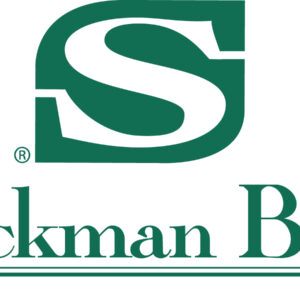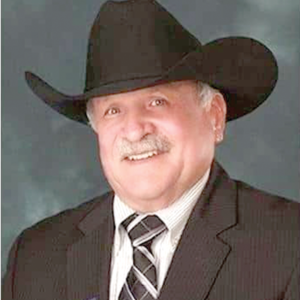Commercial
City Of Billings The/SP Services, 600 W Wicks Ln, Com Fence/Roof/Siding, $21,600
City Of Billings The/ SP Services 600 W Wicks Ln, Com Fence/Roof/Siding, $7,000
Market Place West Partners LLC/Summit Roofing Inc, 2829 King Ave W, Com Fence/Roof/Siding $201,210
Morledge, Karl/Robert Nelson Construction, 2702 Minnesota Ave, Com Fence/Roof/Siding, $6,850
Morgan, Michael A/Neal Sivertson, 421 Milton Rd, Com Fence/Roof/Siding, $12,000
Morgan, Michael A/Neal Sivertson, 900 Rex Ln, Com Fence/Roof/Siding, $12,000
Morgan, Michael A/Neal Sivertson, 912 Rex Ln, Com Fence/Roof/Siding, $12,000
Morgan, Michael A/Neal Sivertson, 926 Rex Ln, Com Fence/Roof/Siding, $12,000
Rocky Mountain Bank/Sprague Construction Roofing Division Roofing, 2615 King Ave W, Com Fence/Roof/Siding, $65,000
Crown Enterprises Inc/Fisher Construction, Inc., 6200 S Frontage Rd, Com New Industrial/Factory/Plant, $3,750,000
1400 S 24th LLC/T.W. Clark Construction LLC, 1420 S 24th St W, Com New Office/Bank, $1,800,000
Crown Enterprises Inc/Fisher Construction, Inc., 6200 S Frontage Rd, Com New Other, $5,000,000
Freshwater Properties LLC/Beartooth Holding & Construction, 525 Henry Chapple St, Com Remodel, $400,000
Wal-Mart Real Estate/Business Johnson Controls Security Solutions LLC, 2525 King Ave W, Com Remodel, $121,000
Stuart, Scott A & Tamera K Ell/Lynnrich Inc., 429 Kathy Ln, Com Fence/Roof/Siding, $18,000
Cornerstone Investment Enterprise/Casey Smith Construction, 225 N 23rd St, Com Fence/Roof/Siding, $4,200
BiLLCo Investment LLCT/Innes Construction Co Inc, 2020 Overland Ave, Com Fence/Roof/Siding, $120,000
Billings Us Employees Federal/A-Team Contracting TPO, 2522 4th Ave N, Com Fence/Roof/Siding, $2,000
Seder, Ron/Seder’s Appliance Htg & Clg, 1515 Central Ave, Com Fence/Roof/Siding, $25,000
Plath, R Russell & Susan L/Hi-Line Roofing Of Montana LLC, 2624 Minnesota Ave, Com Fence/Roof/Siding, $10,000
City Of Billings, Terry Park, 526 Terry Ave, Com New Other, $23,000
HS Management LLC/Big Sky Exterior Designs, Inc, 575 Lincoln Ln, Com New Warehouse/ Storage, $950,000
HS Management LLC/Big Sky Exterior Designs, Inc, 575 Lincoln Ln, Com New Warehouse/Storage, $0.00
Brad Barker/Snowy River Construction/Lawncare, 212 N 29th St, Com Remodel, $46,800
Executive Property Services/Bauer Construction, 1350 Avenue C, Com Remodel, $160,000
Lavanya Kumar Sunkara/Yoga Friends Association, 300 N 25th St, Com Remodel, $4,400
Halsten Holdings LLC/T.W. Clark Construction LLC, 2712 Minnesota Ave, Com Remodel, $30,000
Prichard, Fred J & Jay G/Magic City Construction LLC, 1224 Broadwater Ave, Com Remodel, $4,200
Residential
Infinity Homes/Infinity Home LLC, 2210 Entrada Rd, Res New Single Family, $228,806
Infinity Home/Infinity Home LLC, 7009 Copper View Way, Res New Single Family, $293,667
Harold Larson/Green Jeans LLC, 1395 Watson Peak Rd, Res New Single Family, $234,210
Formation Inc/Formation Inc, 4691 Sky Vista Ct, Res New Single Family, $309,908
Dempsey/Doane/Yellowstone Property Solutions LLC, 2509 Buffalo Ridge Trl, Res New Single Family, $354,933
McCall Development/McCall Development, 6132 Johanns Meadow Ln, Res New Single Family, $286,778
Copper Ridge West Inc/Infinity Home LLC, 3119 70th St W, Res New Single Family, $233,290
Diverse Construction/Diverse Construction LLC, 2244 Gleneagles Blvd, Res New Single Family, $219,780
Buscher Construction Ltd/Buscher Construction Ltd/3133 Falcon Cir, Res New Single Family, $300,000
Kugler, Amy & Corey C/Kugler, 86 Mountain View Blvd, Res New Single Family, $53,100
Moats, Janel/Griffin Construction, 5425 Merlot Ln, Res New Single Family, $573,155
Jeff Kreitzberg Homes Inc/Jeff Kreitzberg Homes, 2229 Entrada Rd, Res New Single Family, $226,359
Patterson/Kings Mountain Builders Inc, 3272 McMasters Rd, Res New Single Family, $650,000
Design Builders, Inc/Design Builders, Inc, 2510 Blue Mountain Trl, Res New Single Family, $278,706.00
McCall Development /McCall Development, 6152 Johanns Meadow Ln, Res New Single Family, $187,837
Magnus Land Development LLC/Brown Builders Inc, 6309 Beckville Ln, Res New Two Family, $300,000
Magnus Land Development LLC/Brown Builders Inc, 6313 Beckville Ln, Res New Two Family, $300,000





